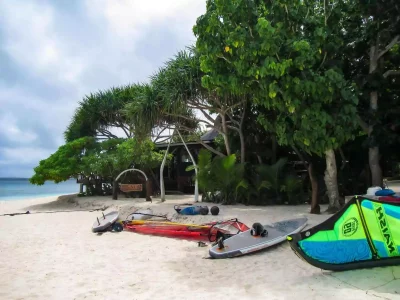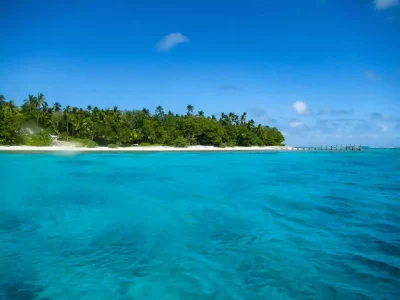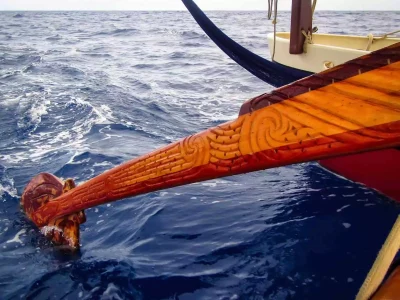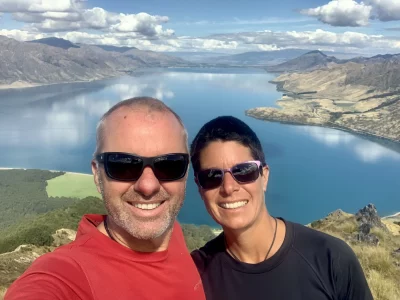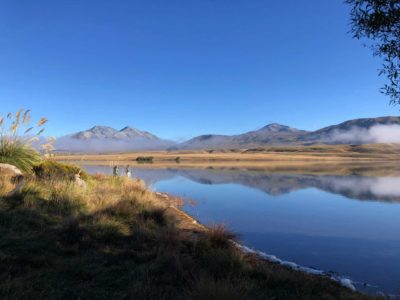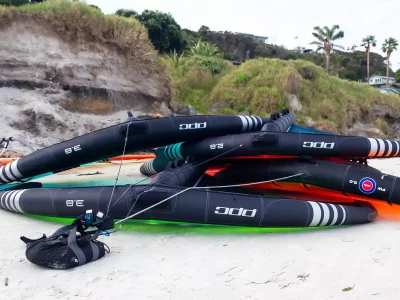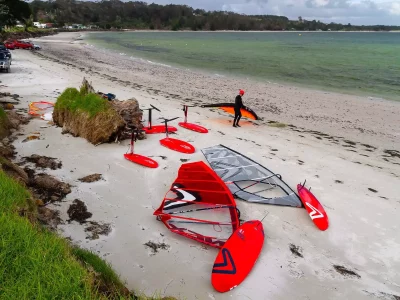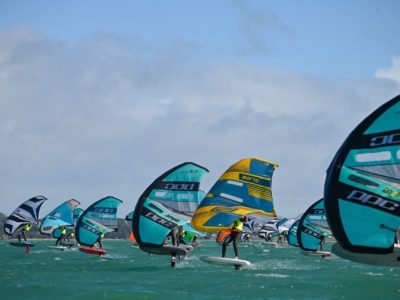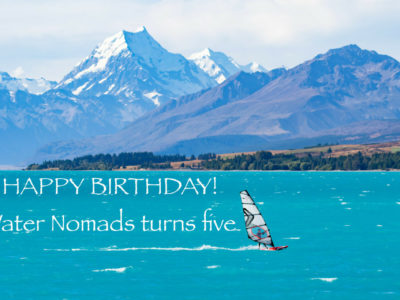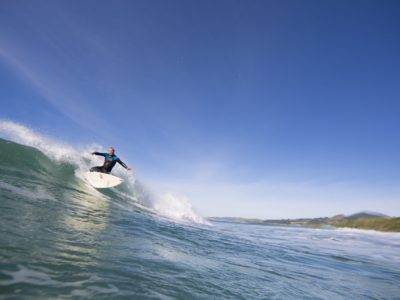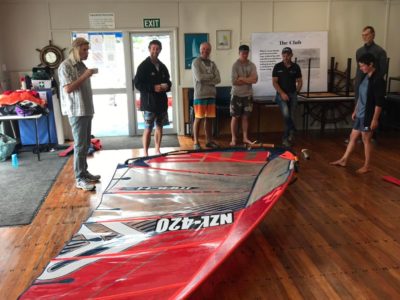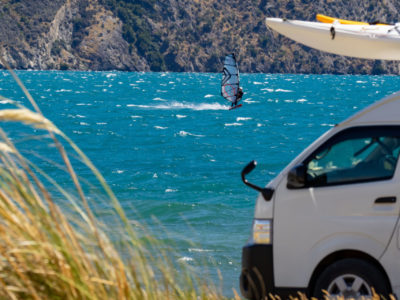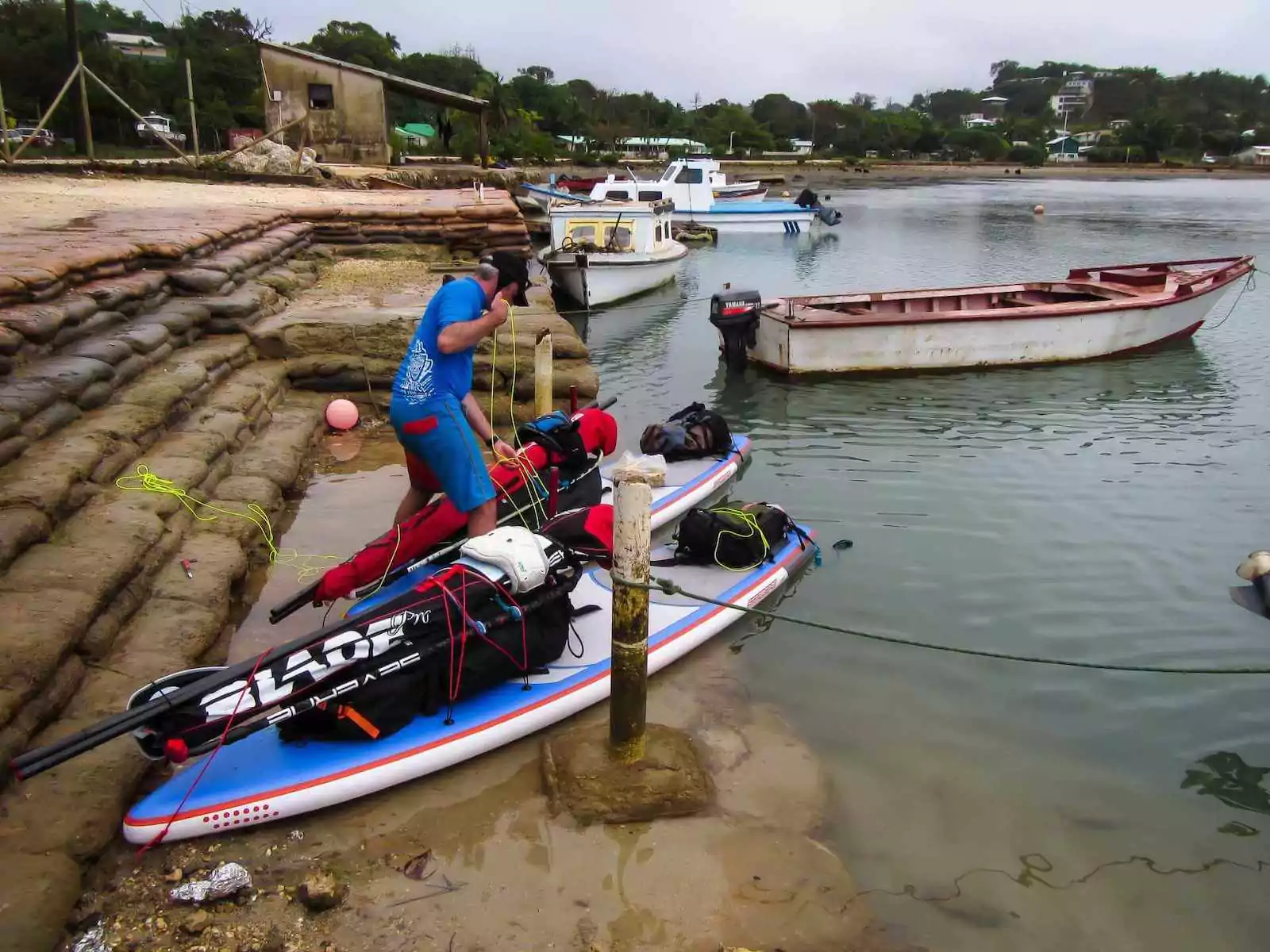
ISLAND HOPPING IN THE SOUTH PACIFIC
Water Nomads in Tonga Part 2
After over a week of trying to get a ride from Tongatapu to Vava’u and eventually making the most amazing passage via traditional waka, we were finally in our playground for our boardpacking adventure – the island group of Vava’u. All ready to roll!
After a night in a hostel, we made something resembling a plan and stocked up on food and water for 2 weeks (or what we thought should be ok for 2 weeks, supplemented by coconuts and pawpaws that we would be finding on the islands).
We waited for the morning shower (aka tropical downpour) to pass, before collecting our luggage from Okeanos and setting off for our boardpacking adventure. It was time to get everything across the hill to the Old Harbour on the east side of Neiafu. The prevailing winds in Tonga at that time of year are usually to be from the southeast. With no idea if those boards of ours would actually go upwind when windsurfing them, as far East as possible seemed the logical place to start our trip.
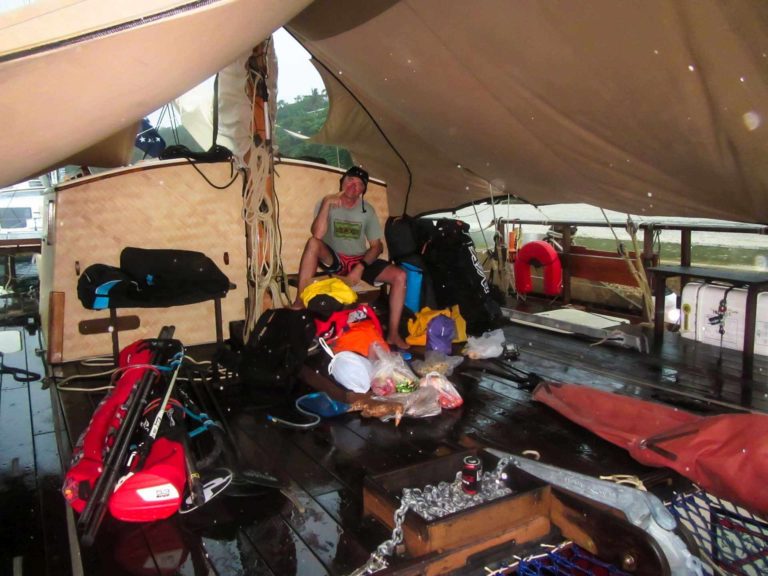
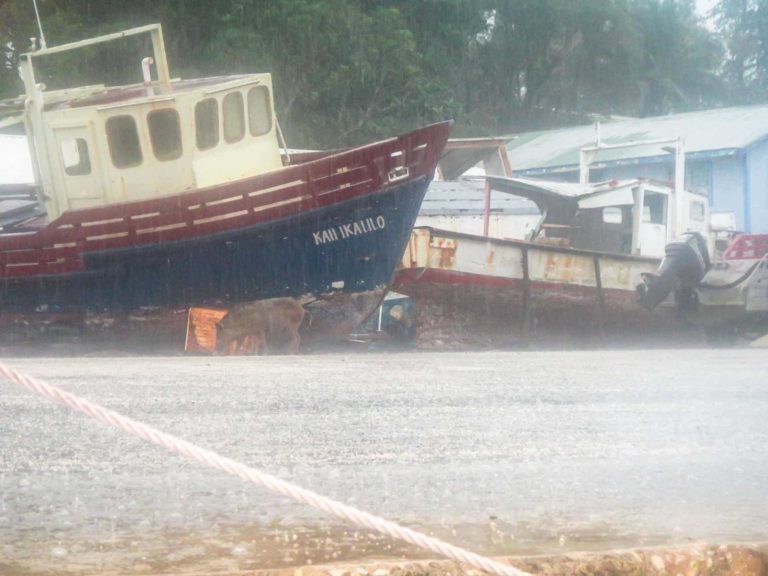
In a quiet bay, observed by a couple curious locals, we wrestled our tent, a stove and a couple of t-shirts in drybags, pumped our boards up and launched into the unknown on our two weeks of exploring the island group… The sun came out and there was no wind when we started paddling.
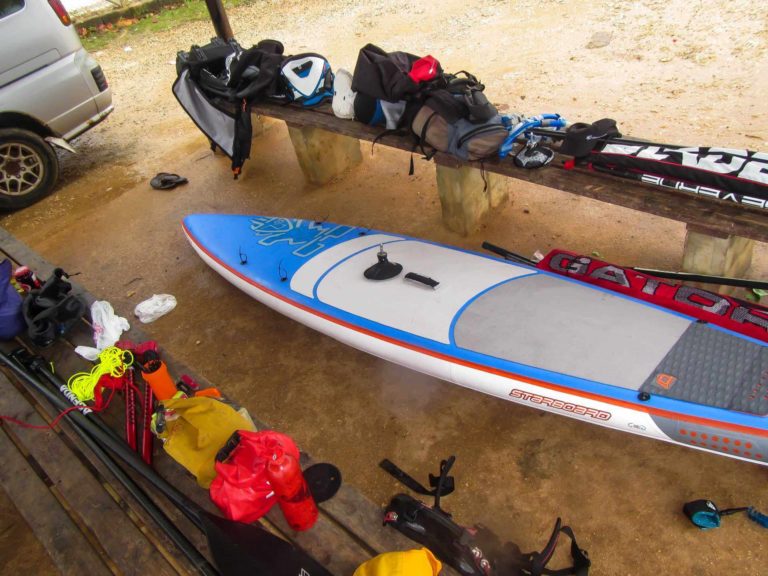
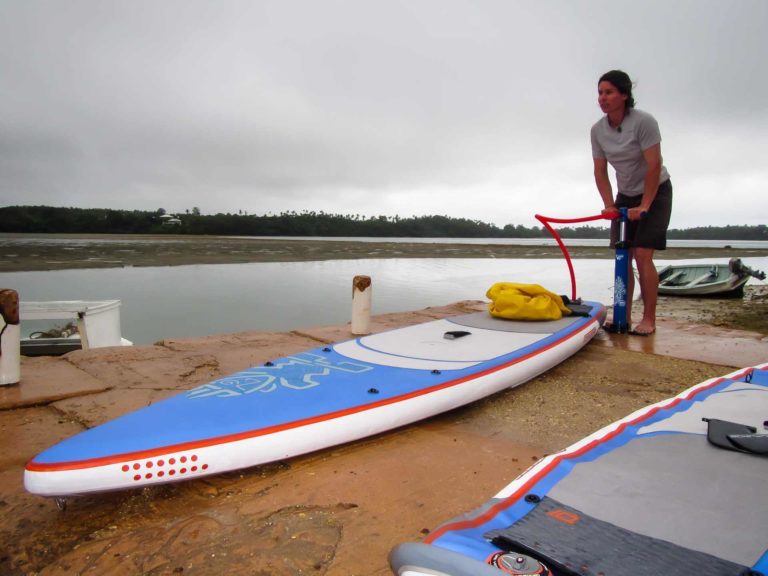
The water was absolutely stunning and super clear, like paddling in an aquarium. We marvelled in the beauty and admired the starfish and corals as we paddled over them along the shoreline. The sea urchins looked a bit less friendly: Those spikes were just plain frightening and mean! You definitely don’t want to come off your board on top of those guys!
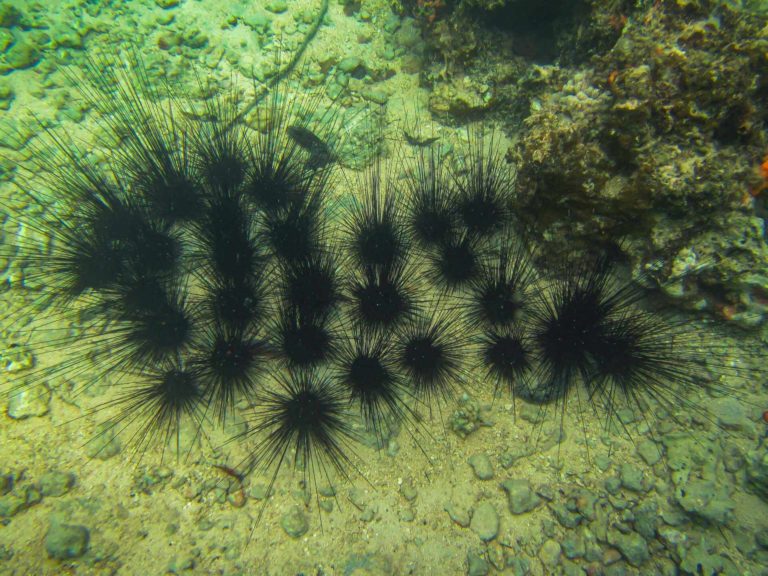
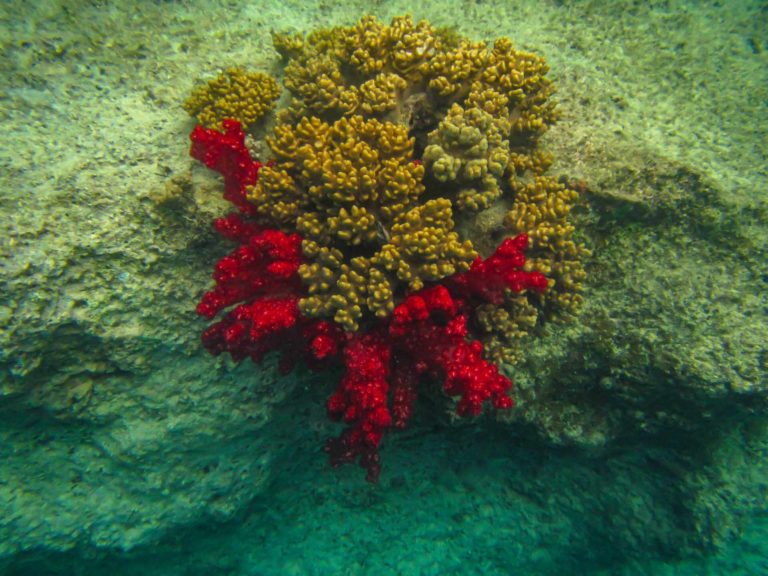
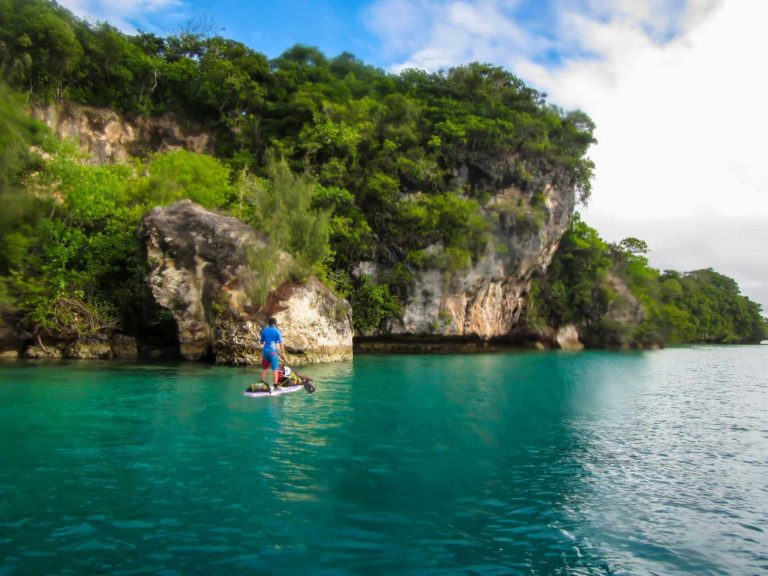
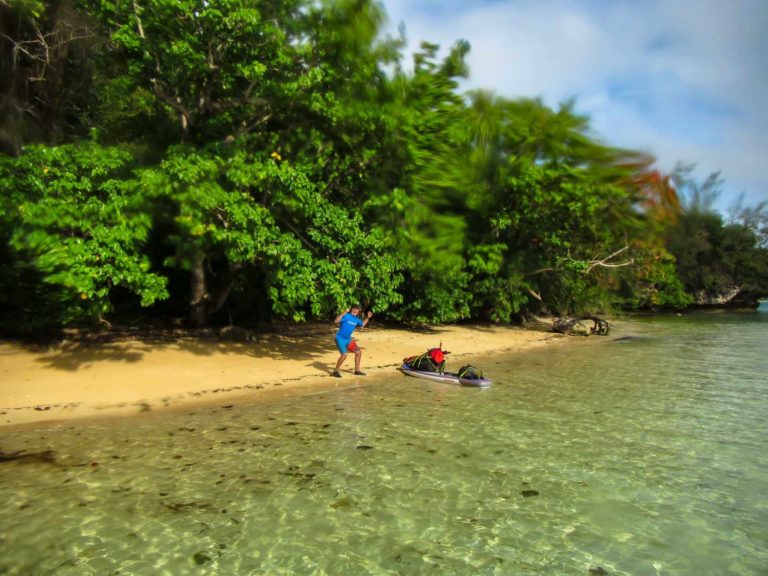
The moment we cleared the first headland, we discovered that there actually was wind – a fresh headwind blowing straight into our face! Alas, not sure if those boards would track upwind at all and no beach to change over to sailing mode anyway, we had to brace it and paddle into it.
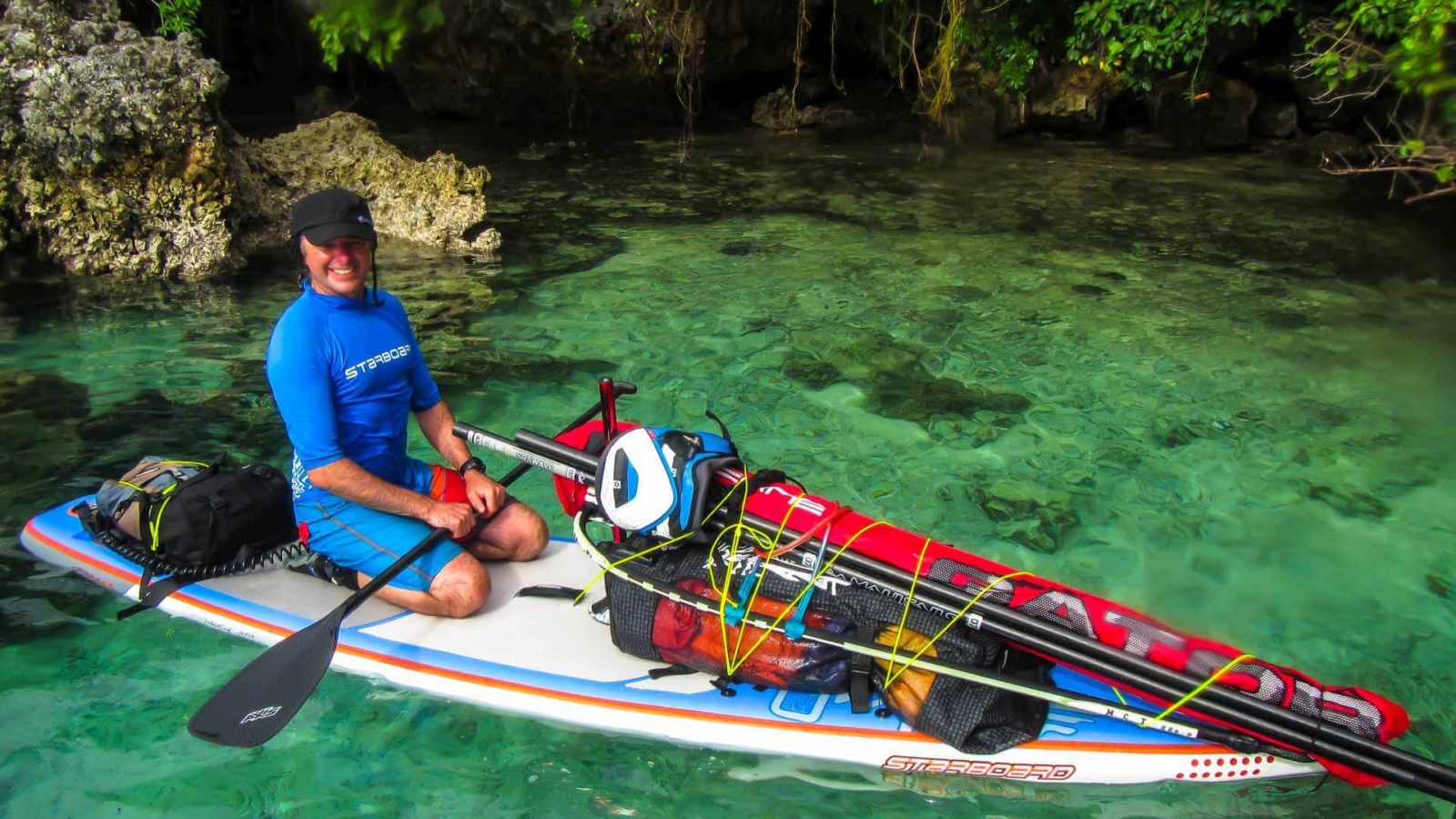
Eventually we made it to Mafana Island where we found a beach to rig our sails for the first time. We hoped to make it with a few upwind tacks across to Ofu Island. I set off and was surprised how well the board tracked upwind. Having all the luggage on board was a bit of a pain, but nothing that 30 years of windsurfing experience couldn’t handle. Bevan on the other hand only learned how to windsurf two years earlier. It took him a while to get his head around not being able to move around on the board without risking it to go into submarine mode, or having to hop over a huge bag of luggage with each tack. Fun watching, I can tell you!
We pitched our tent on the Northwest tip of Ofu Island and were absolutely stoked how well the day went. It far exceeded expectations! Now there was nothing that could stop us the next 2 weeks!
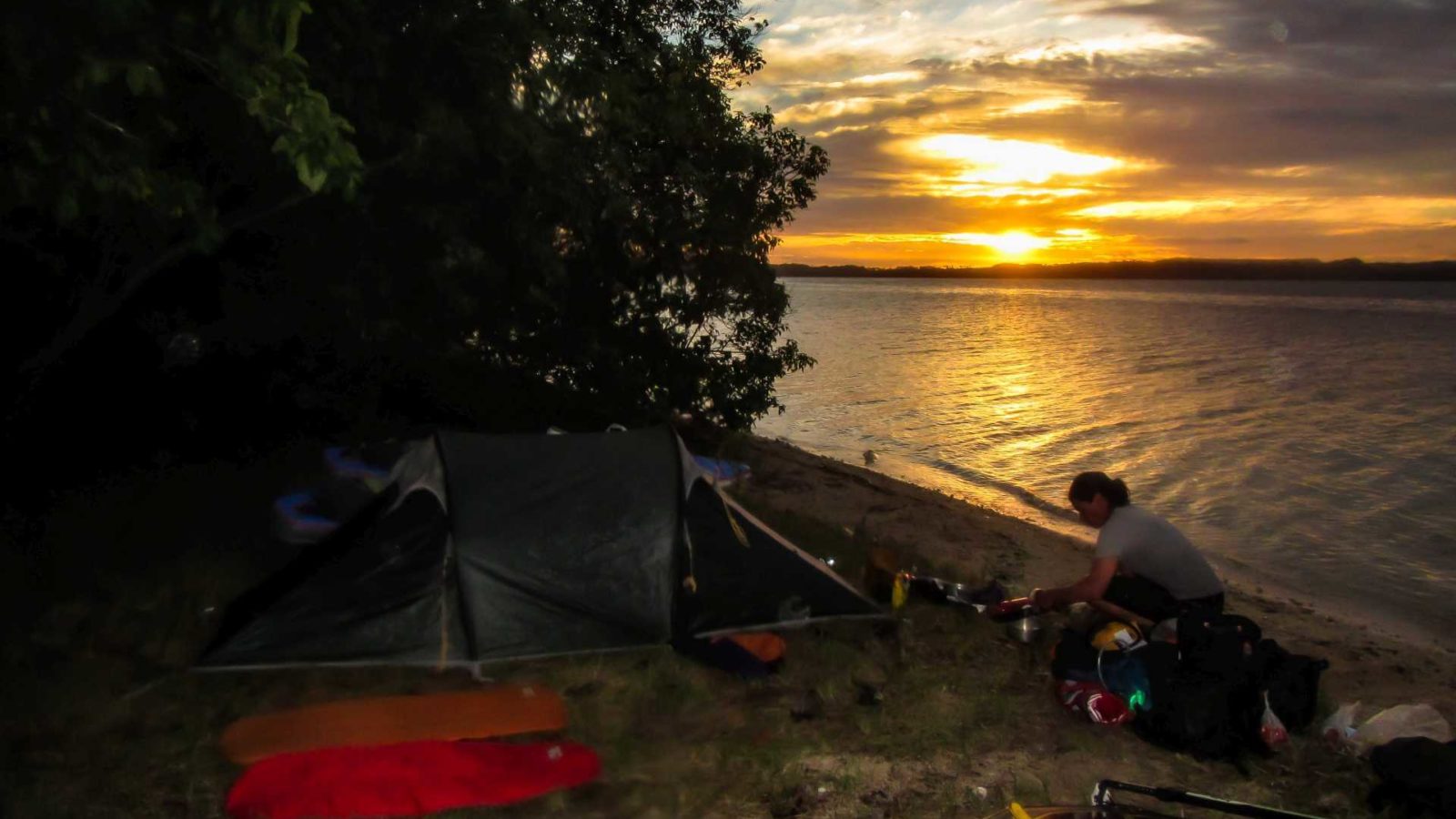
Day 2, destination Kenutu Island. Uninhabited and raw, at the western edge of Vava’u. The weather was a bit wet and squally, matching the wild destination.
We set off paddling to get out of the shelter of Ofu Island. A tiny uninhabited island just north of Ofu was a welcome stopover to change from paddling to sailing. Plenty of coconuts everywhere – that $10.- investment in a machete and learning how to open a coconut paid out already *. Life is good J…. Until it’s not.
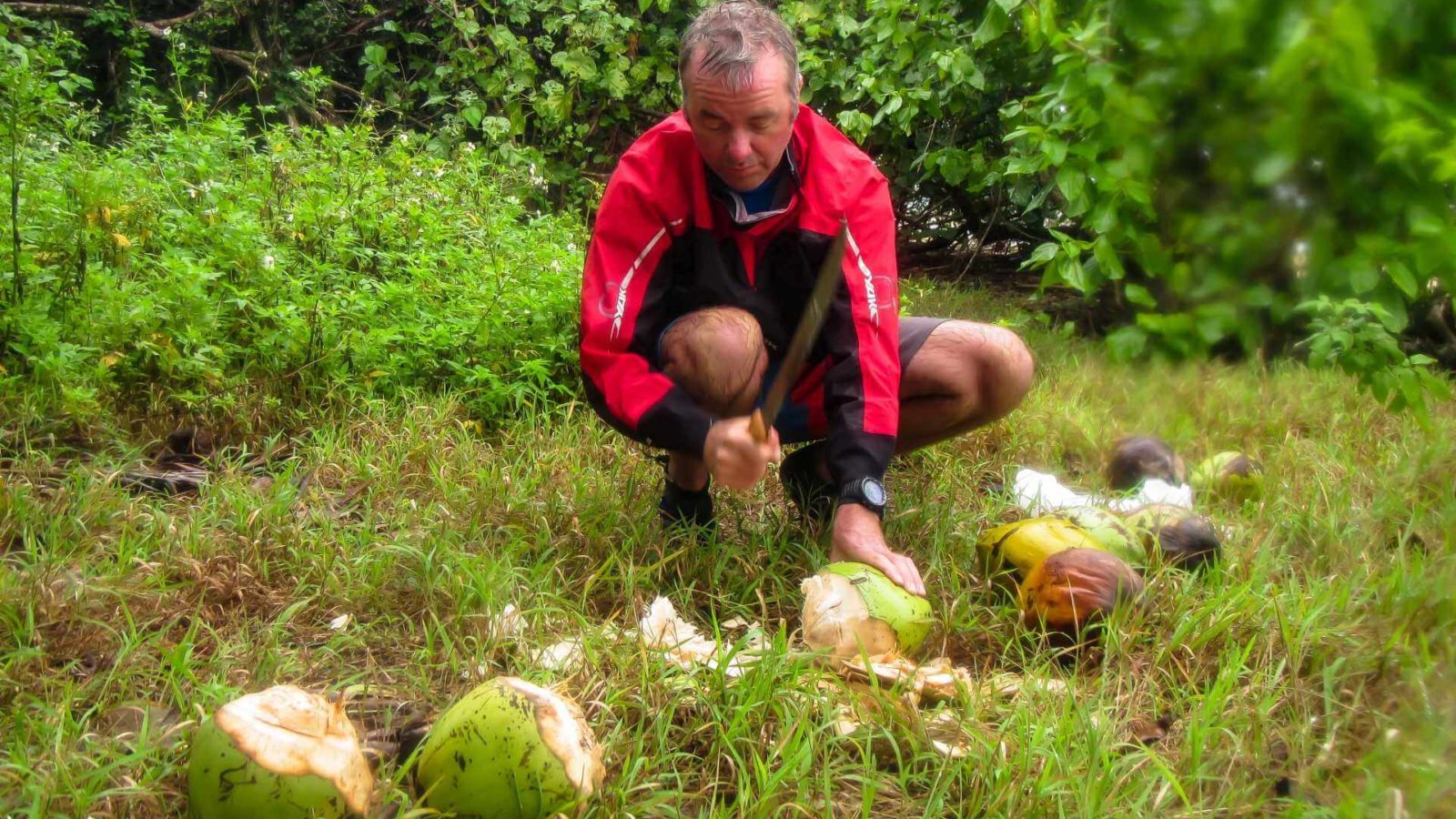
Approaching Kenutu Island under sail, we found ourselves in a maze of coral bombers, some of them less than 30cm under the surface. Well, we thought they were deeper, but I worked out the true depth by knocking both of my fins off.** Oops. It’s only day two, now marooned on an uninhabited outermost island….. Is our adventure over before it really started?
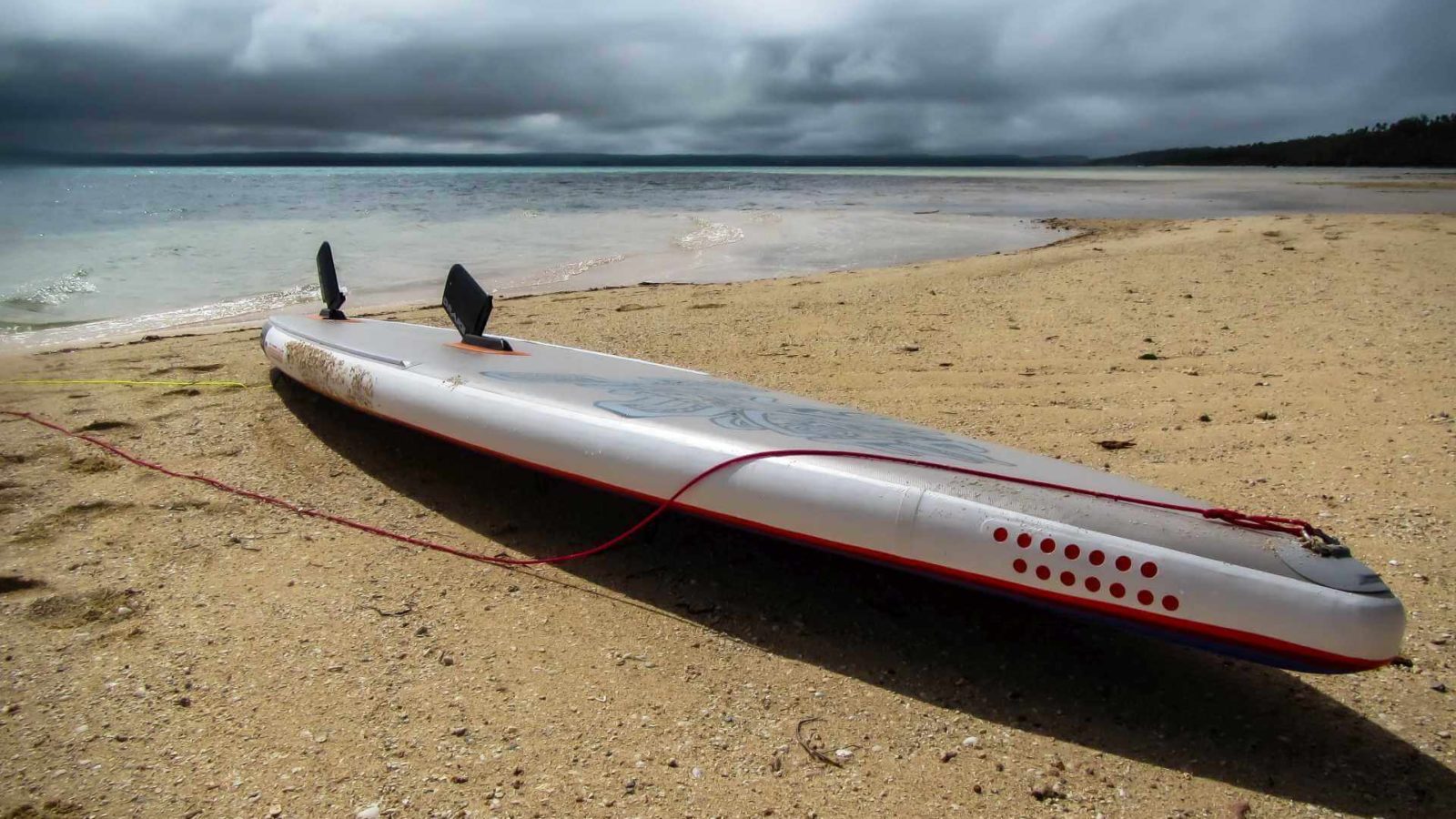
How to repair an inflatable WindSUP on an uninhabited island?
Well, it is actually a lot easier than what you think. All you need is the following:
- A powerdrill
- A 8mm stainless steel bolt and nut
- Some 3mm cord
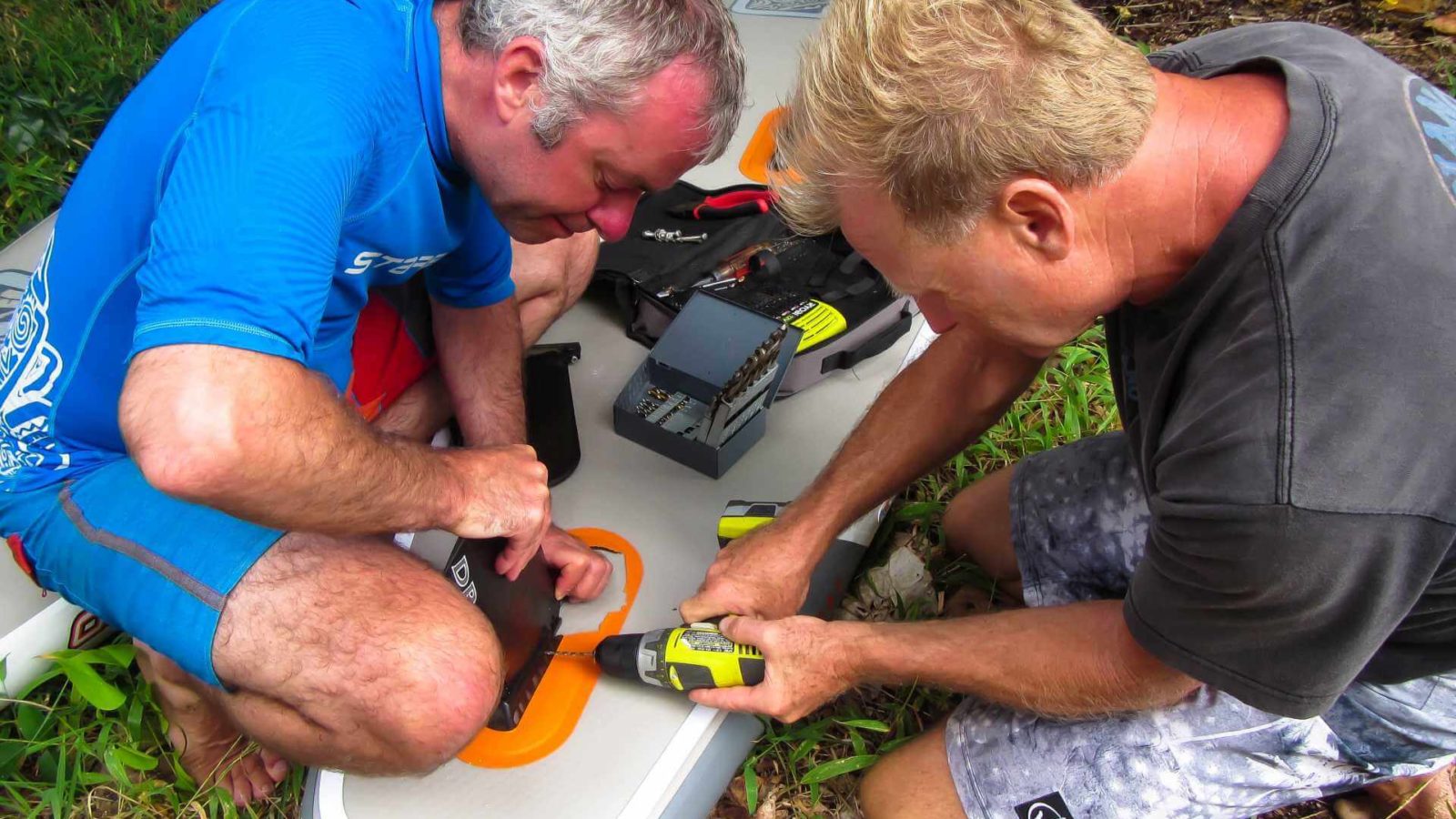
Fortunately, although the island was uninhabited, Black Hawk, a cruising yacht, was anchored in the bay. They were about to head off, but we managed to get their attention just before they were about to depart and John could help us with our repair. 30 minutes and a stainless steel bolt later, both fins were back in place. Kinda. I wasn’t too trusting in the integrity of the rear fin repair, so I tied it on with the 3mm cord as well – as we were already pushing the design limits of these boards. And as long as I could hear the humming of the cord, I knew I hadn’t lost that fin, just yet anyway!
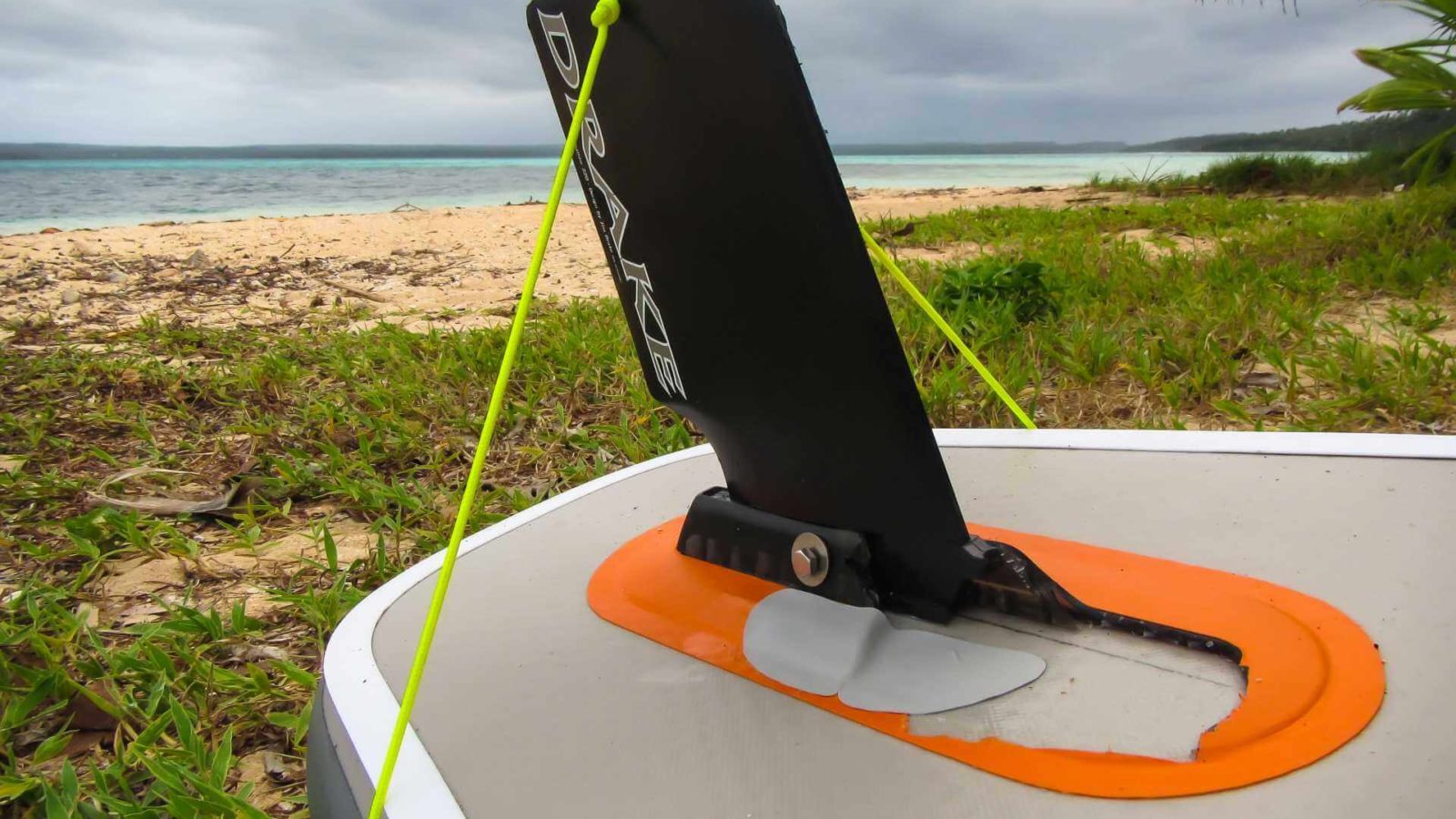
We spent the rest of the day exploring the island. Kenutu is a barrier island on the eastern end of Vava’u, with steep cliffs dropping down to a rough sea. We were glad that our adventuring playground was protected by islands and reef like this and the water between them was fairly tame.
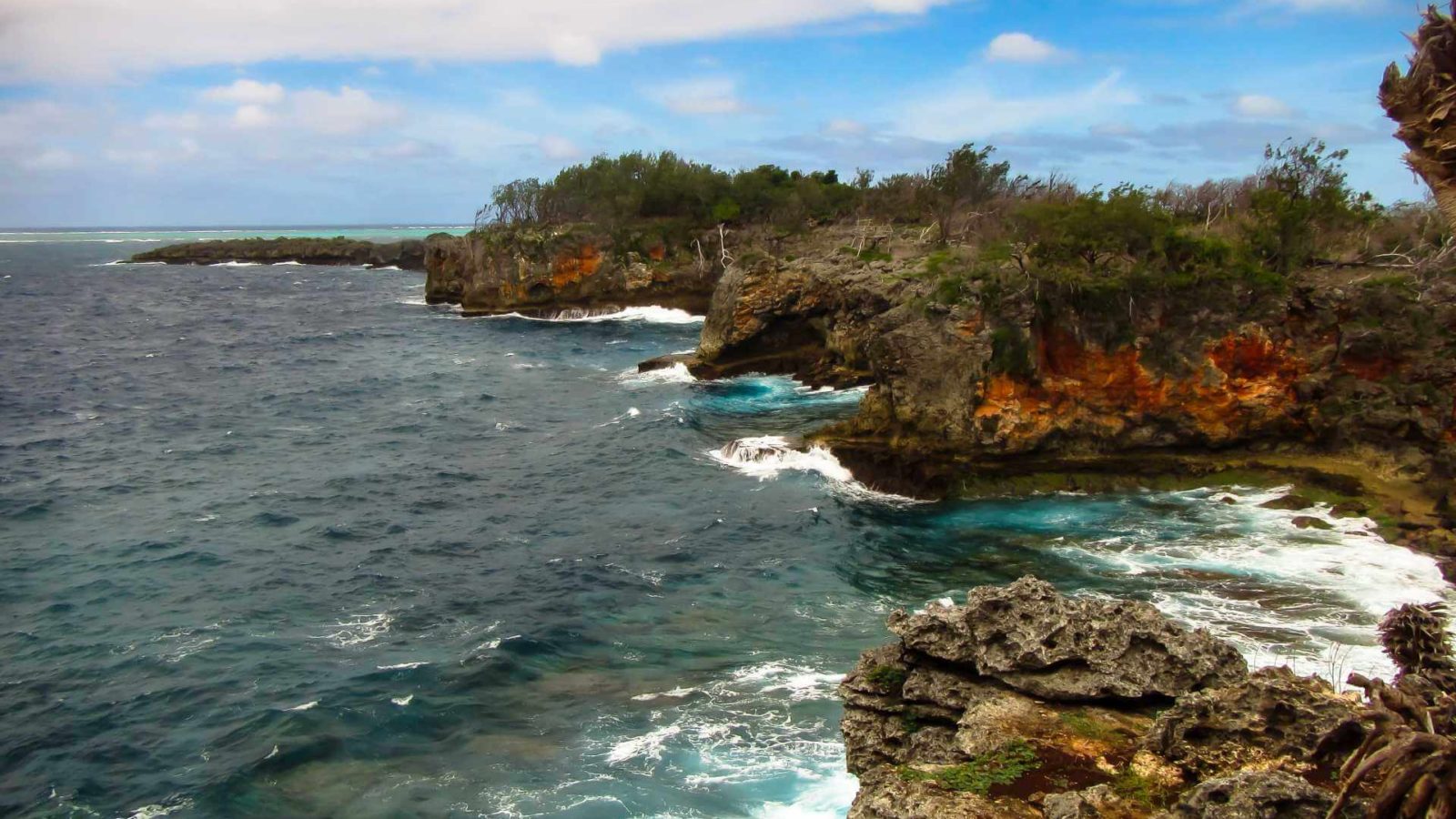
The next morning we set off downwind, aiming for the south end of Ofu Island, where we could see a nice sandy beach to land on. Black Hawk had warned us about plenty of shallow reefs, and the 15 knots of wind created enough of a ripple that they were obvious. We stayed well clear after yesterday’s experience!
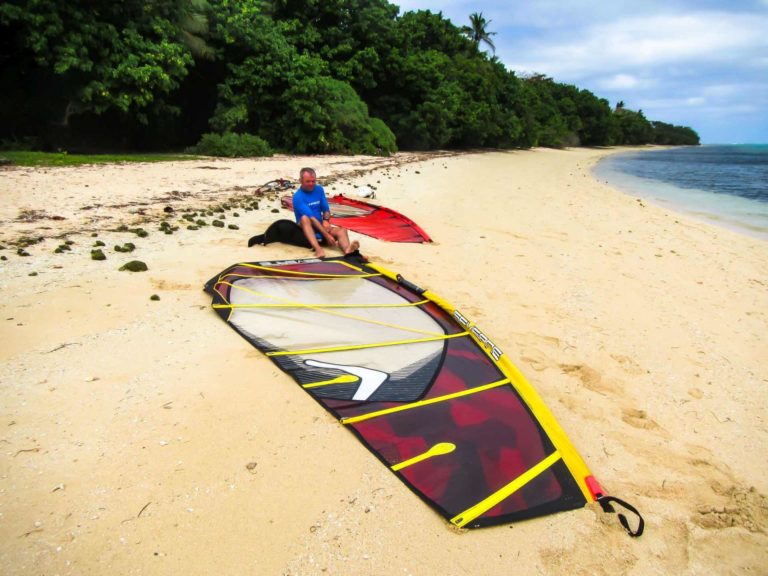
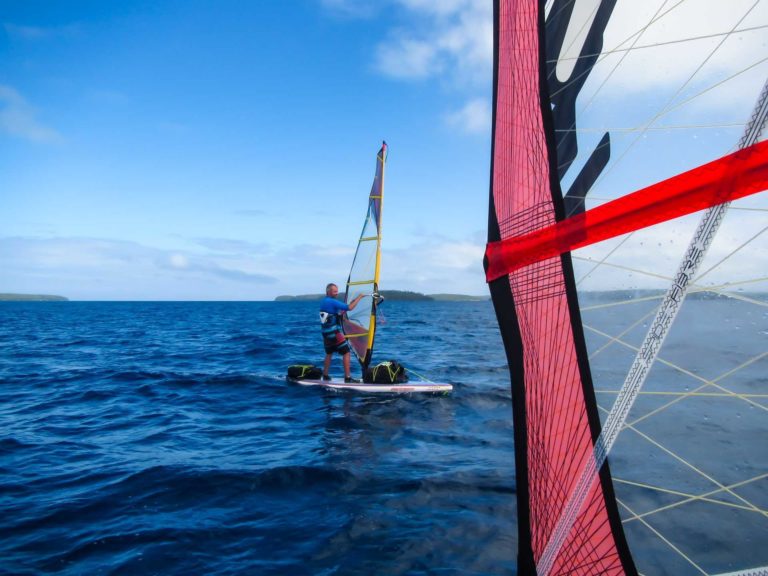
I was very cautious in the beginning, not trusting the repair completely. Well, I did trust the repair, I just didn’t trust the rest of the finbox, as it came off in the first place! But we made it across alright and were pretty stoked with ourselves.
Launching and landing the WindSUPs is always a bit of a mission: Unlike a kayak, that you can pull up on a beach and then start unloading it (if you wish to do so), we had to load or unload the boards in knee deep water, due to the fins. We also didn’t use mechanical U-Joints to connect sail and board. To reduce unnecessary strain on that connection, we avoided having the sails laying in the water connected to the boards. So, sails off first when landing and on last when launching. That meant, one of us was holding both boards in knee deep water, while the other one was ferrying our gear between the beach and the boards. It became particularly tedious when the beach was very shallow or at an outgoing tide, ever mindful of stonefish….Launching and landing the WindSUPs is always a bit of a mission: Unlike a kayak, that you can pull up on a beach and then start unloading it (if you wish to do so), we had to load or unload the boards in knee deep water, due to the fins. We also didn’t use mechanical U-Joints to connect sail and board. To reduce unnecessary strain on that connection, we avoided having the sails laying in the water connected to the boards. So, sails off first when landing and on last when launching. That meant, one of us was holding both boards in knee deep water, while the other one was ferrying our gear between the beach and the boards. It became particularly tedious when the beach was very shallow or at an outgoing tide, ever mindful of stonefish….
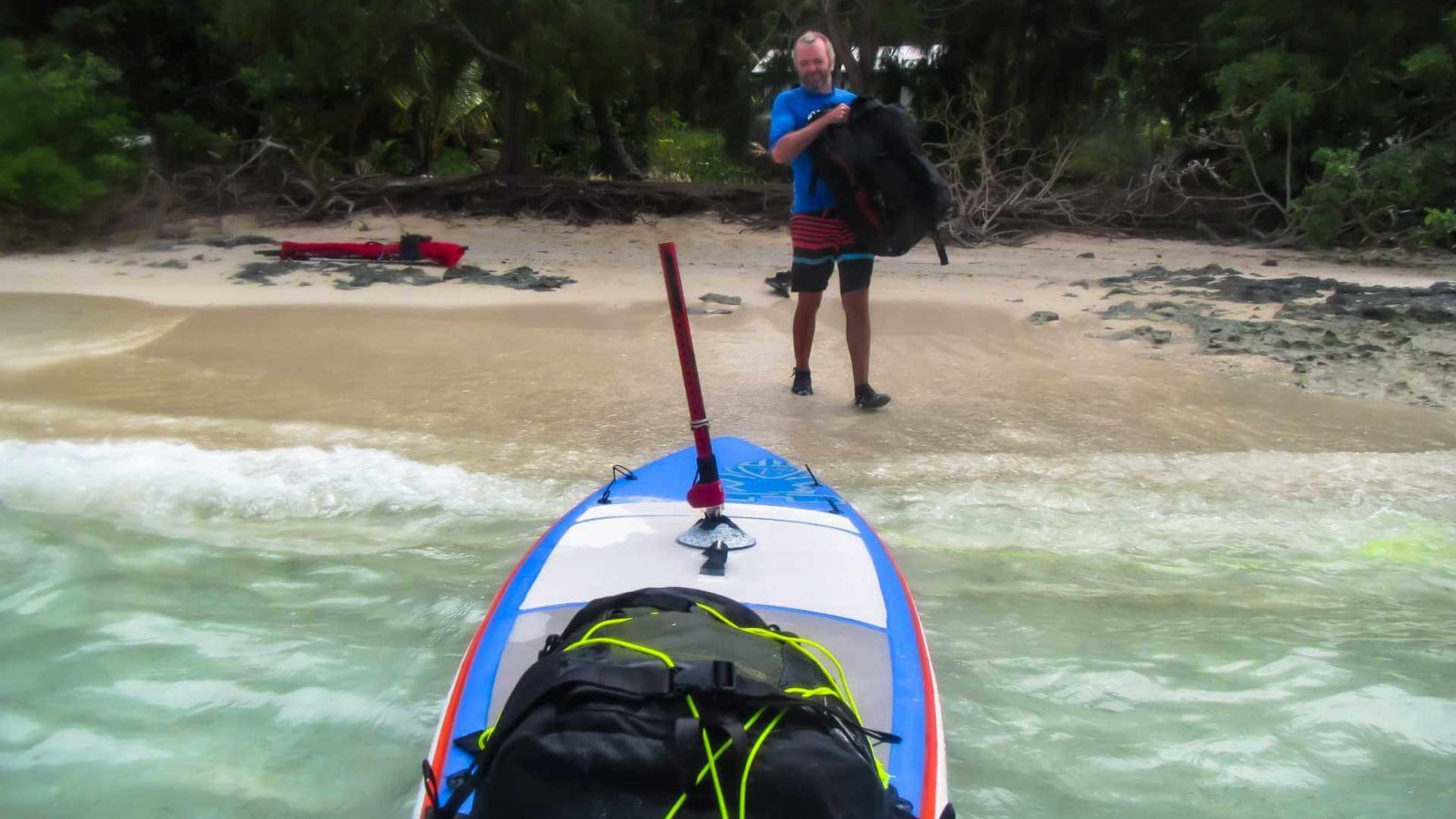
After a lunch break we carried on to Tapana, made it across some very shallow reefs (just) and set up camp on a lovely beach on the south side. A beautiful ketch – Silverlynx – was anchored in the bay. Curious, we sailed up to it to say hi. Sure, we could have paddled over after setting up camp, but sailing there and manoeuvring close with a fully loaded board is just a lot more fun! Years of doing Raceboard regattas payed out 😉 It didn’t take long before we made friends with the lovely American family on board who were cruising the world.
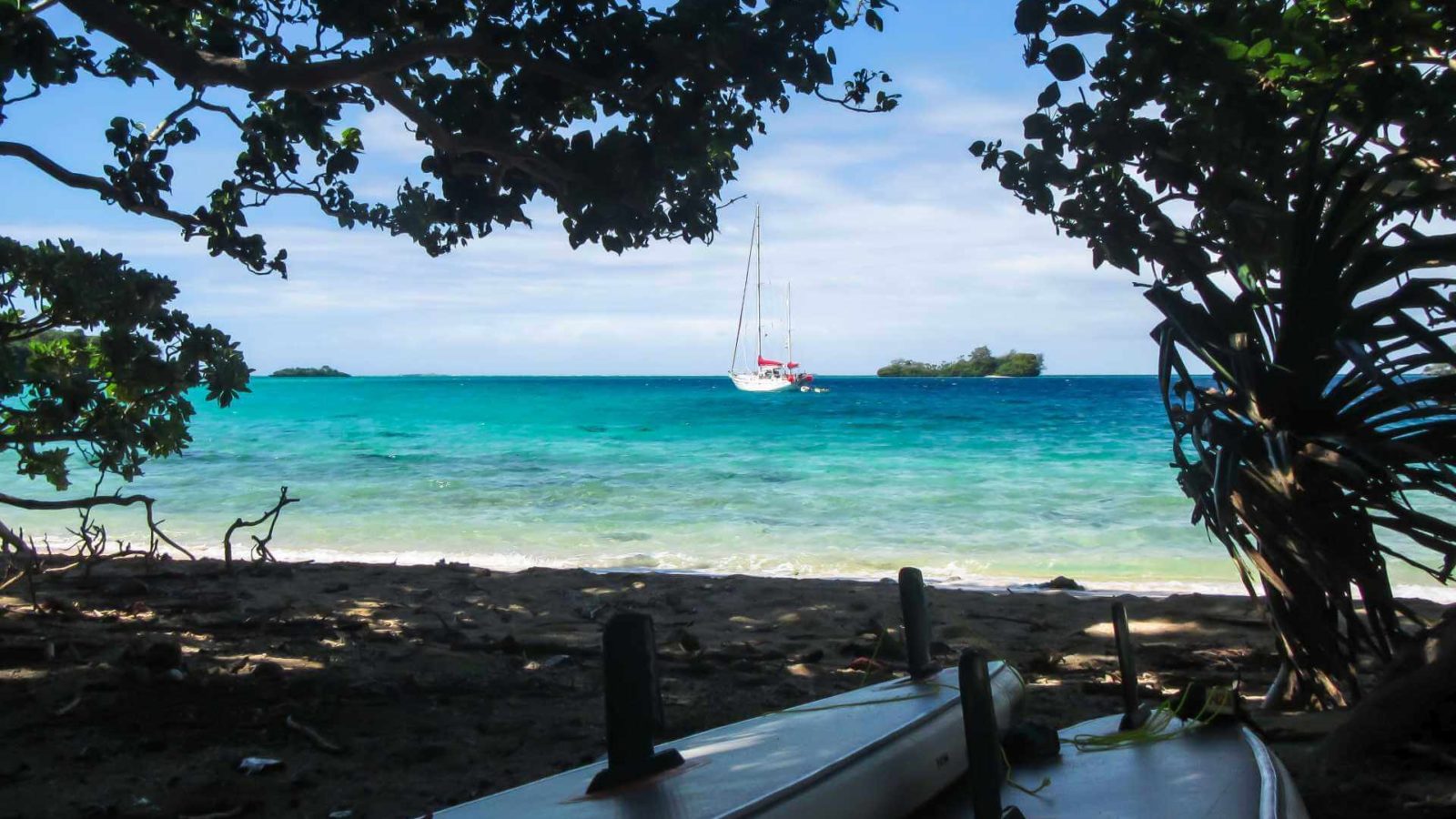
The previous day on Kenutu Island, some rats had gotten into our bags. Hence we had to replenish our meagre supplies of food. Paddling around Tapana Island the following day to get to the settlement of Pangai for our shopping was very pleasant. Several yachts were anchored in the lagoon between Tapana and Pangaimotu, and there was even a floating gallery with a local artist! Turned out, she just sold the ark and we met her there on one of her last days.
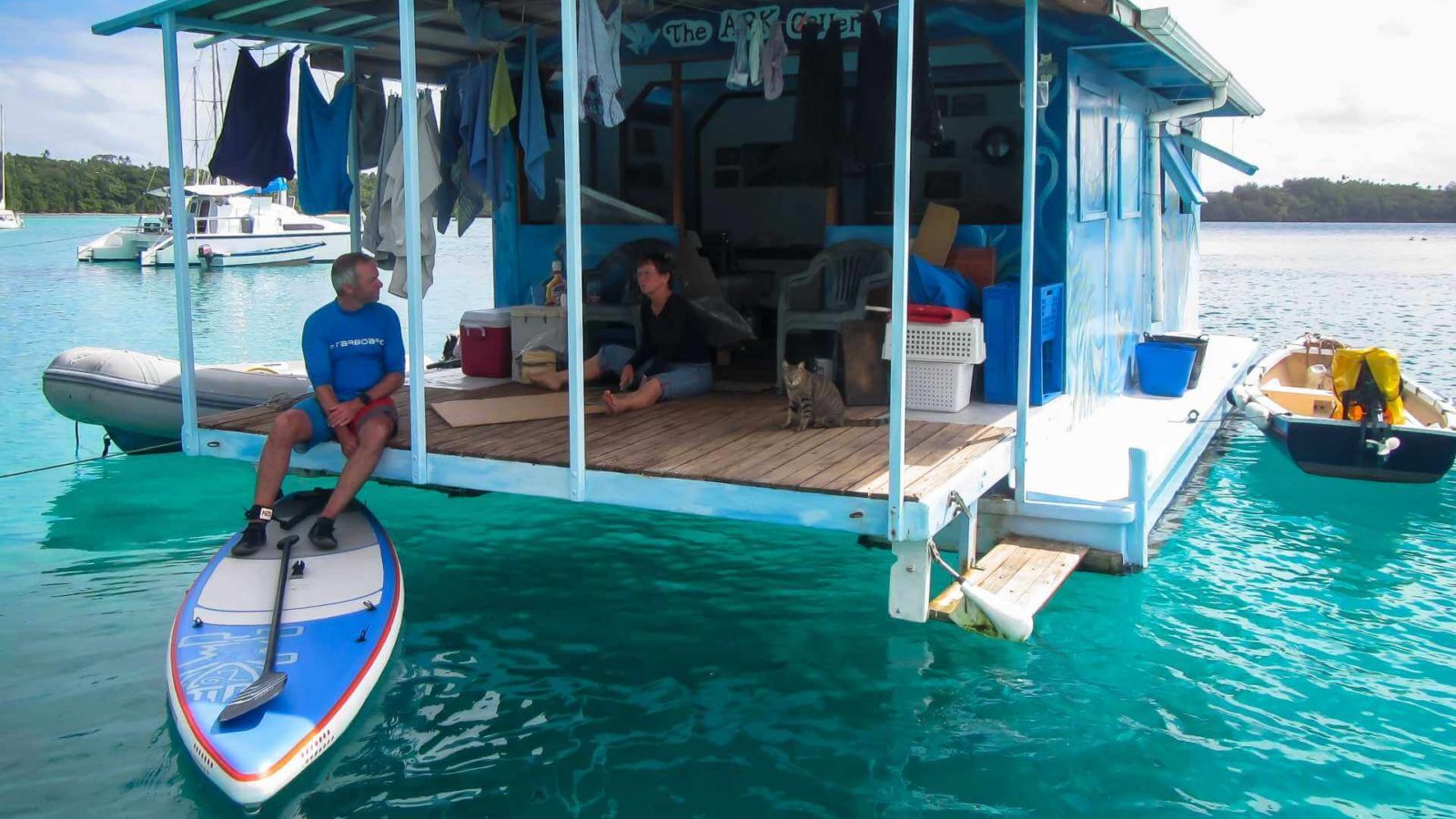
The village of Pangai was a good 30 minutes walk from the beach, and the local shop didn’t have much to buy, except for huge chunks of frozen pork. Still better than nothing.
Back at the lagoon we ran into a few Tongan lads having a picnic. Being curious about each other, we strung up a conversation and did get invited to share their food. Delicious! A lot better than cooked kasava with sweet chili sauce (that’s what we had the last few days). Some of them had family in New Zealand, while others had lived in Auckland themselves for several years!
This evening, we cooked a big meal on Silverlynx with our frozen pork and some of their supplies. It was a great evening, with lots of stories and adventures being told.
After another day exploring the island of Tapana, the SE-wind came back and was blowing straight into our little campsite. Time to move on! Our print out of a Google satellite map indicated that Euakafa had only one house on it. There would be plenty of space for us to find some coconuts and pawpaw trees and live the Robinson life! Hence we chose it as our next destination. Bypassing Taunga, it was a stretch of about 10km, the longest open water crossing we have done so far.
Looking to travel New Zealand? Check out Water Nomads for Watersports Rental and Surfari Trips!
*It was also the last time we found coconuts to drink. On any other island, the rats did beat us to them. And I wasn’t game enough to climb a coconut tree – it’s a long way to the next hospital
**The boards we used had a center fin (like a mini dagger board) to go upwind and then the normal rear fin.
